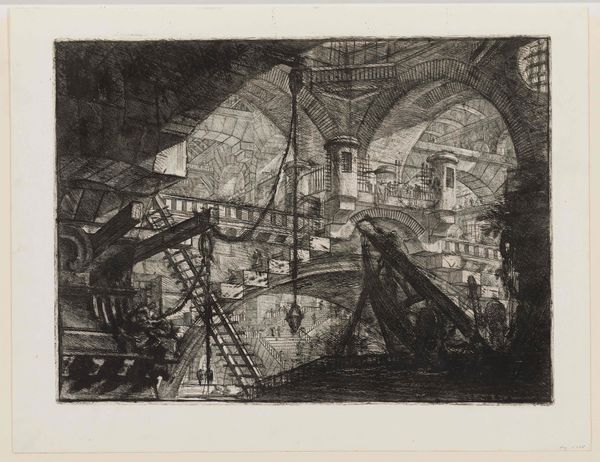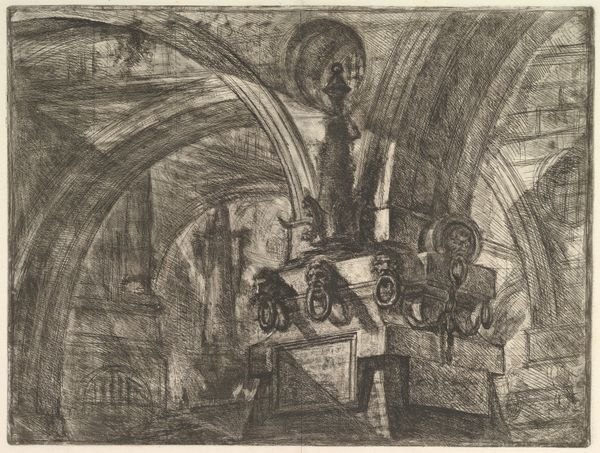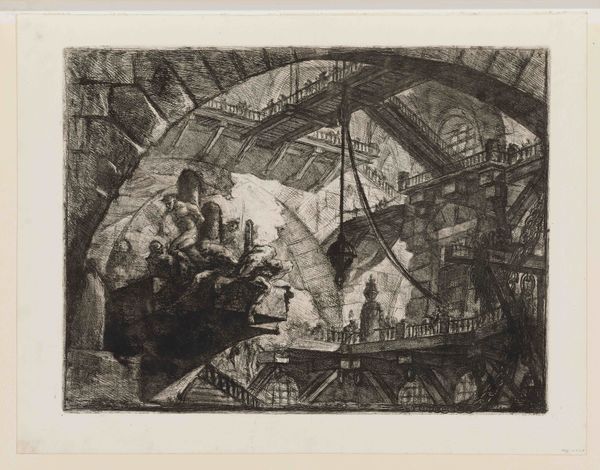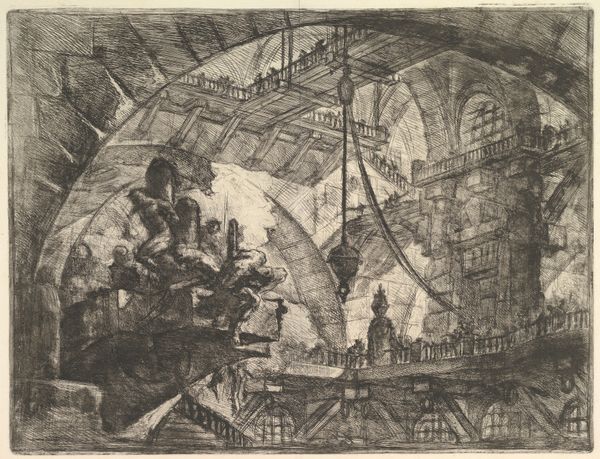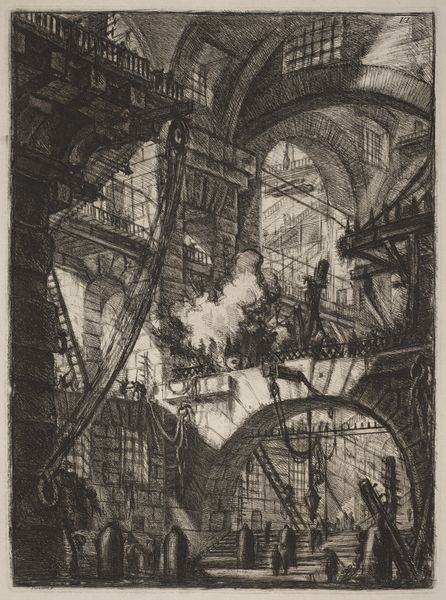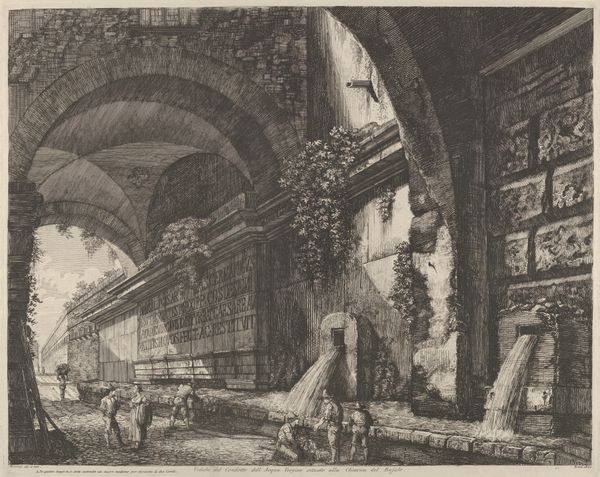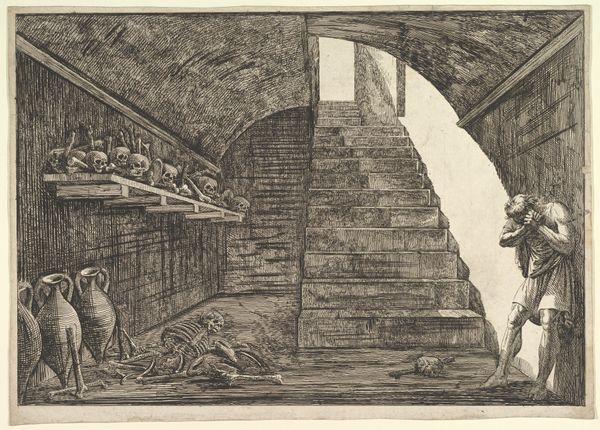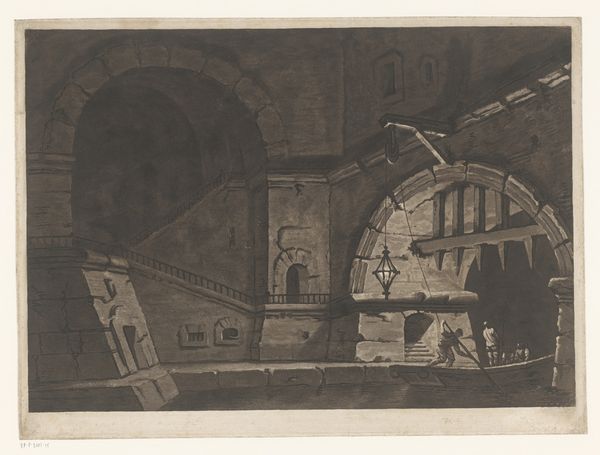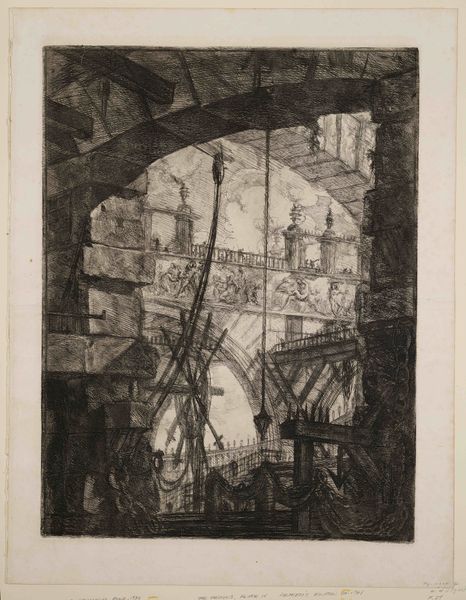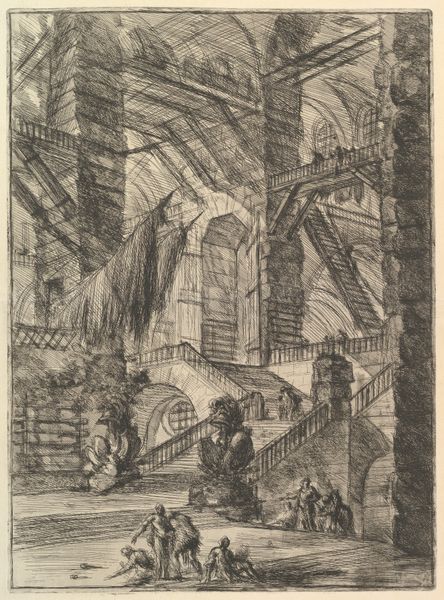
The Arch with a Shell Ornament, from "Carceri d'invenzione" (Imaginary Prisons) 1744 - 1755
0:00
0:00
drawing, print, etching
#
drawing
#
baroque
# print
#
etching
#
arch
Dimensions: Sheet: 19 1/2 x 25 3/16 in. (49.5 x 64 cm) Plate: 15 15/16 x 21 7/16 in. (40.5 x 54.5 cm)
Copyright: Public Domain
Curator: Piranesi's "The Arch with a Shell Ornament, from 'Carceri d'invenzione'," created between 1744 and 1755, is an etching offering a glimpse into his imaginary prisons. I’m immediately struck by the darkness and sheer scale conveyed through the intricate lines of the etching. Editor: And for me, I'm drawn to the materiality of the piece, this really interesting relationship between the depicted solid, unforgiving architecture, and the lightness of the etched line itself. I wonder how Piranesi was sourcing his copper plates; the means of procuring and processing these materials surely shaped the production. Curator: The print comes from a politically tumultuous time, a period where notions of justice and confinement were actively being debated across Europe, informing artistic creation. It’s hard not to view these immense, impossible structures through the lens of power and oppression. Editor: Right. It's worth looking more closely at how the lines were etched and bitten by acid. The variable textures suggest varying strengths of acid and lengths of exposure. It really shows us that etching, much like building, is an additive process: layer upon layer defining form. Curator: Absolutely. Piranesi was not just an artist but also an astute businessman, selling these prints to Grand Tourists. The ‘prisons’ catered to a certain romantic fascination with the sublime and the macabre, fueling Piranesi’s commercial success. We have to acknowledge the complex power dynamic at play as these prints entered circulation and how their meanings were affected by the audience that received them. Editor: The level of detail here makes one wonder about his workshop practices. How many assistants might have been involved in the ground laying or even in the more tedious aspects of acid-resist application. And how did the etching trade impact paper consumption, and rag demand in 18th-century Europe? These might seem unrelated questions but speak to the larger system within which art comes to exist. Curator: It certainly forces us to consider these artworks beyond purely aesthetic terms. What do you take away from considering the wider context of production? Editor: I think this artwork highlights that an image's value is determined less by the individual vision of an "artist-genius" than it is by the concrete manipulations that take place at every stage of material making and reception, impacting the symbolic meaning of the forms presented. Curator: Considering Piranesi and his haunting architectural spaces through your perspective adds layers to understanding his work. Editor: And seeing this image contextualized within its social framework clarifies our present moment, adding depth to this depiction of “Imaginary Prisons.”
Comments
No comments
Be the first to comment and join the conversation on the ultimate creative platform.
